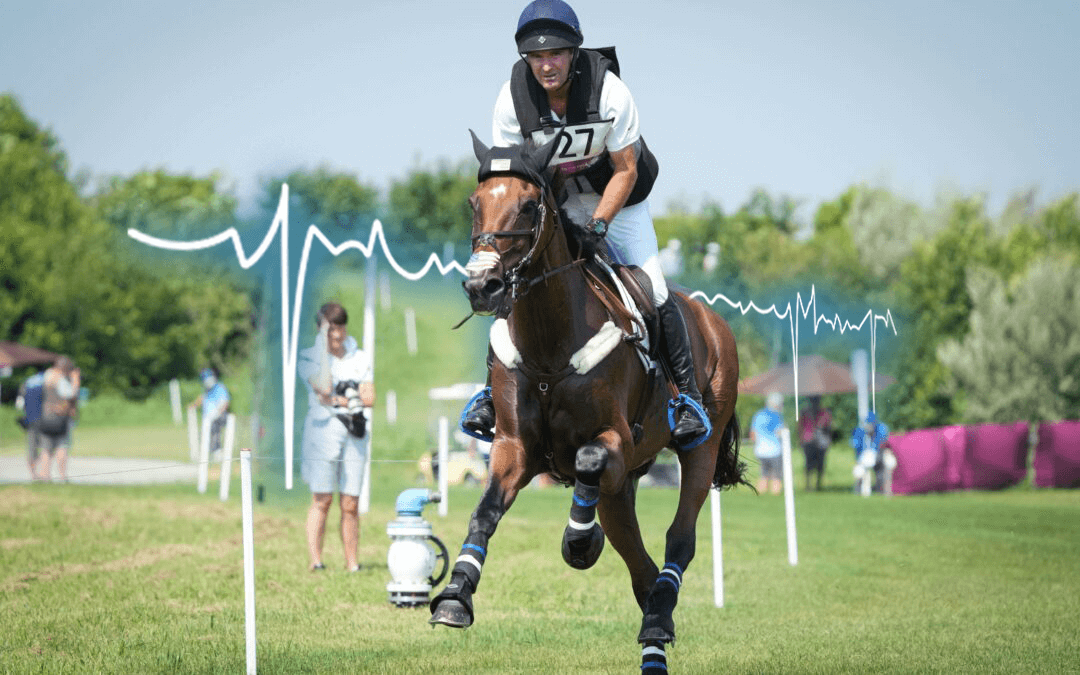The horse is a high-level athlete. In order to maximize its performance while preserving its health, it is essential to understand the various aspects of its physiology. Among them, heart rate plays a fundamental role: it provides an insight into the efficiency of the cardiac function and the overall health status of the athlete.
How can the heart rate of a horse be measured? And how can the performance and health of the horse be optimized using this parameter?
The horse’s heart rate
What is heart rate?
The heart rate – or HR – of the horse corresponds to the number of heartbeats per minute (bpm). In other words, it measures the speed at which the heart pumps blood throughout the horse’s body.
In the equine athlete, where endurance and performance go hand in hand, heart rate is closely related to the ability to sustain effort and recover quickly after exercise. Indeed, an optimal heart rate ensures an adequate supply of oxygen and nutrients to the muscles, thereby improving athletic performance and minimizing the risk of injuries.
A horse’s resting heart rate typically fluctuates between 25 and 40 BPM. The horse’s heart rate increases linearly with the intensity of the effort during physical exercise. HRMax (maximum heart rate) can exceed 240 BPM.
How to measure it?
At rest, the accurate measurement of a horse’s heart rate can be done by counting the pulsations at the level of the carotid artery or femoral artery. Traditionally, this was done manually by palpating the pulses, but nowadays, new technologies allow for the collection of heart rate data, even during exercise.
These wearable sensors, such as EQUIMETRE VET, enable continuous and real-time monitoring of the heart rate during training. Additionally, they facilitate the recording and storage of data, allowing for in-depth post-exercise analysis and personalized monitoring of health and performance.
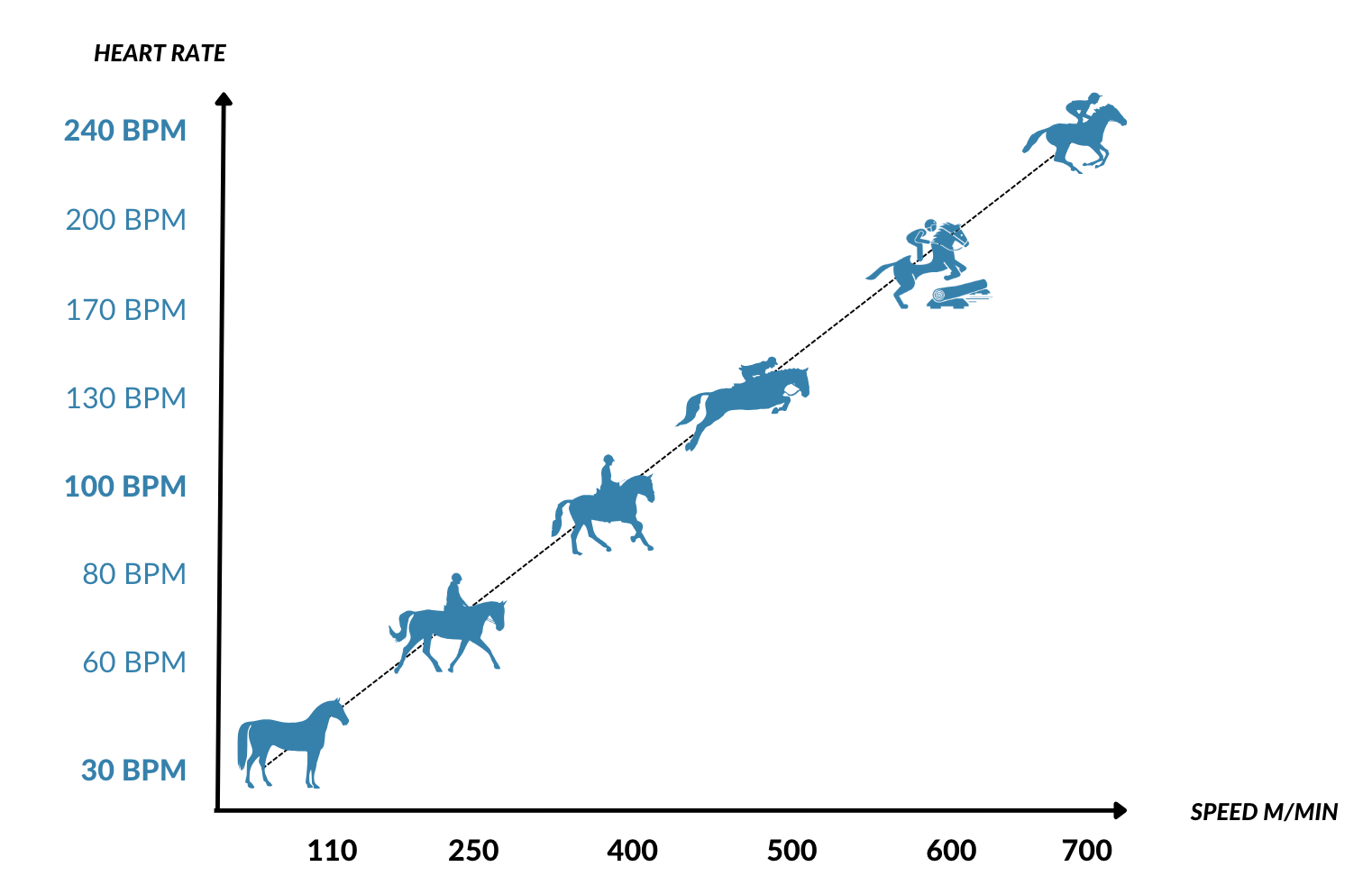
What factors influence it?
A horse’s heart rate is affected by several variables, including:
- Training intensity: when a horse is subjected to intense physical activity, its heart rate increases to match the increased need for oxygen and energy. Higher exercise intensity will result in a significant increase in heart rate.
- Fitness level: a well-trained horse generally has a lower resting and exercise heart rate compared to a less fit horse. Good fitness allows the heart to pump blood more efficiently, reducing excessive stress on the cardiovascular system.
- Stress and anxiety: just like in humans, stress and anxiety can influence the heart rate in horses. Stressful situations such as transportation, competitions, or changes in the environment can lead to a temporary increase in heart rate.
Heart rate for health monitoring
Regular monitoring of heart rate allows for the detection of early signs of fatigue. When the heart rate reaches abnormally high levels or fails to return to a normal level after exercise, it may indicate excessive fatigue or stress on the cardiovascular system.
Significant and unexplained variations in heart rate can be a precursor to cardiac pathologies, respiratory disorders, or other underlying health issues. By regularly monitoring the heart rate, it is possible to identify these abnormalities and take necessary measures for early diagnosis and appropriate treatment.
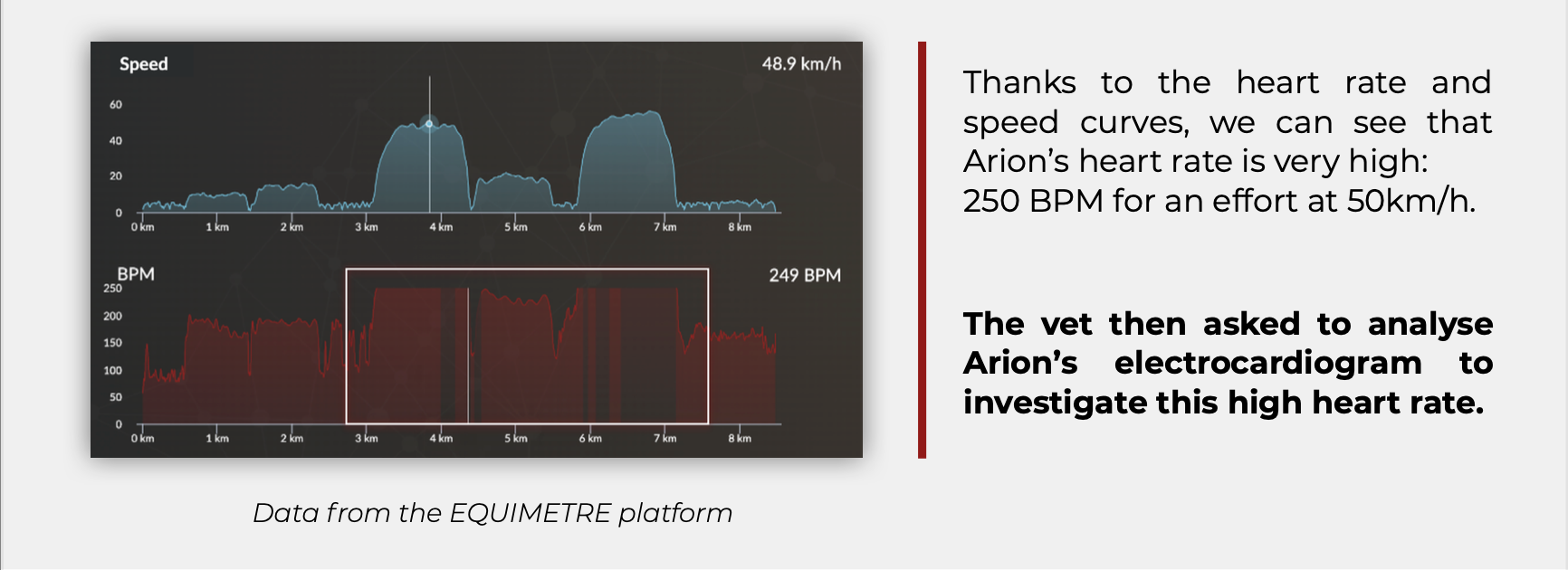
The analysis of the electrocardiogram (automatically collected during each training session with EQUIMETRE) enabled the veterinarian to detect atrial fibrillation.
Heart rate for training monitoring
Exercise has beneficial effects on the heart. Regular training helps increase the weight of the heart, improve its pumping functions, and develop and open small capillaries in the cardiac muscle, which increases oxygen supply to the heart. With these changes, the heart pumps blood throughout the body with fewer contractions.
Different heart rate zones
The first step in incorporating heart rate (HR) into training monitoring is to determine specific target heart rate zones for each horse, which are typically defined as a percentage of the maximum heart rate. Four effort zones are identified:
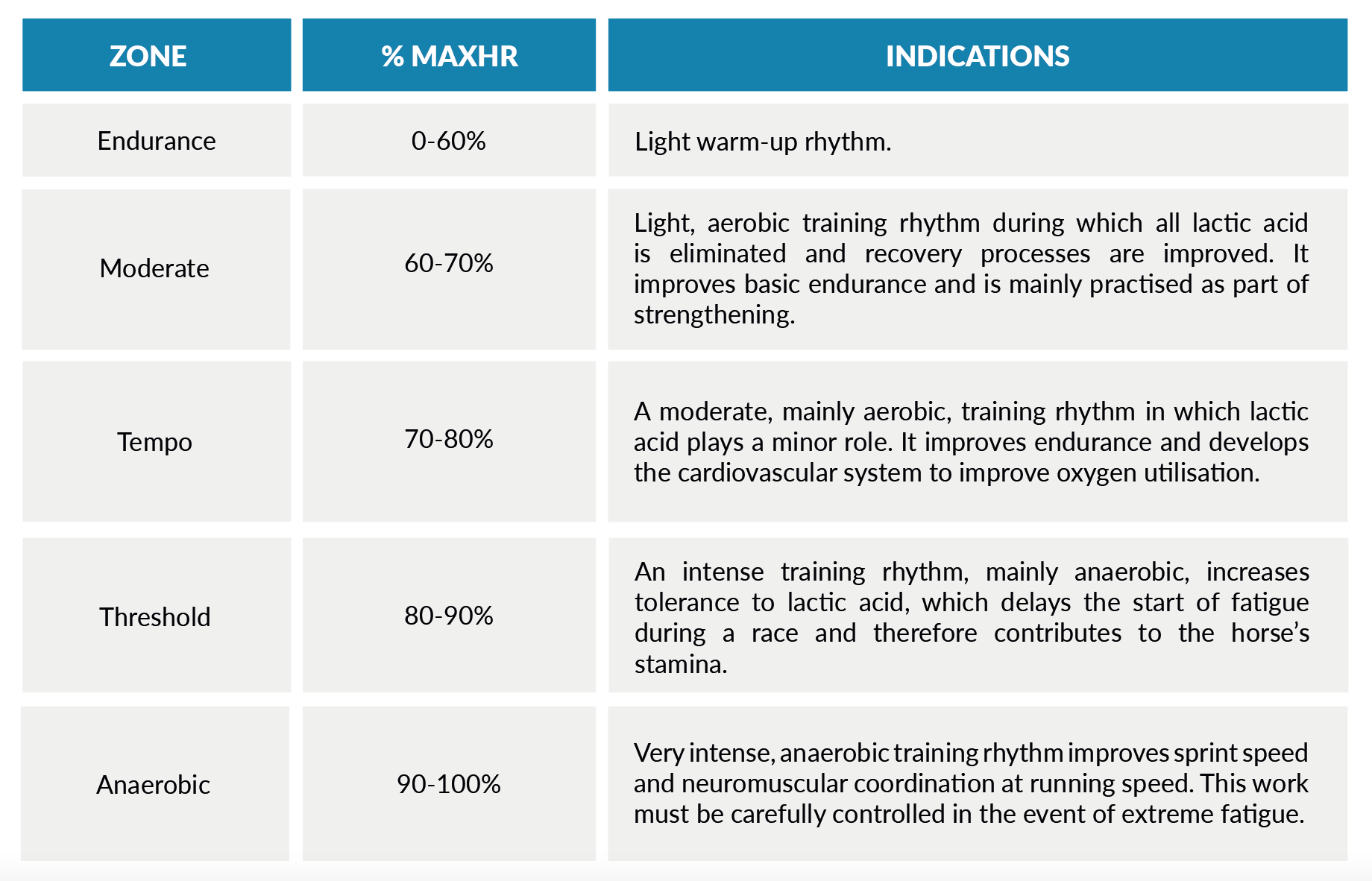
Recovery, a key indicator of fitness level
Heart rate is also a valuable indicator for assessing the recovery of an athletic horse. After a training session, it is important to monitor how quickly the horse’s heart rate returns to its reference resting value. A rapid recovery of the heart rate to the normal level indicates good physical fitness and an ability to recover efficiently.
The gradual decrease in heart rate, therefore, helps determine if the horse is recovering optimally. A slow recovery or a prolonged period of elevated heart rate may indicate excessive fatigue or an underlying health issue. Monitoring the recovery process through heart rate provides insights into the horse’s overall fitness level and helps adjust training programs accordingly.
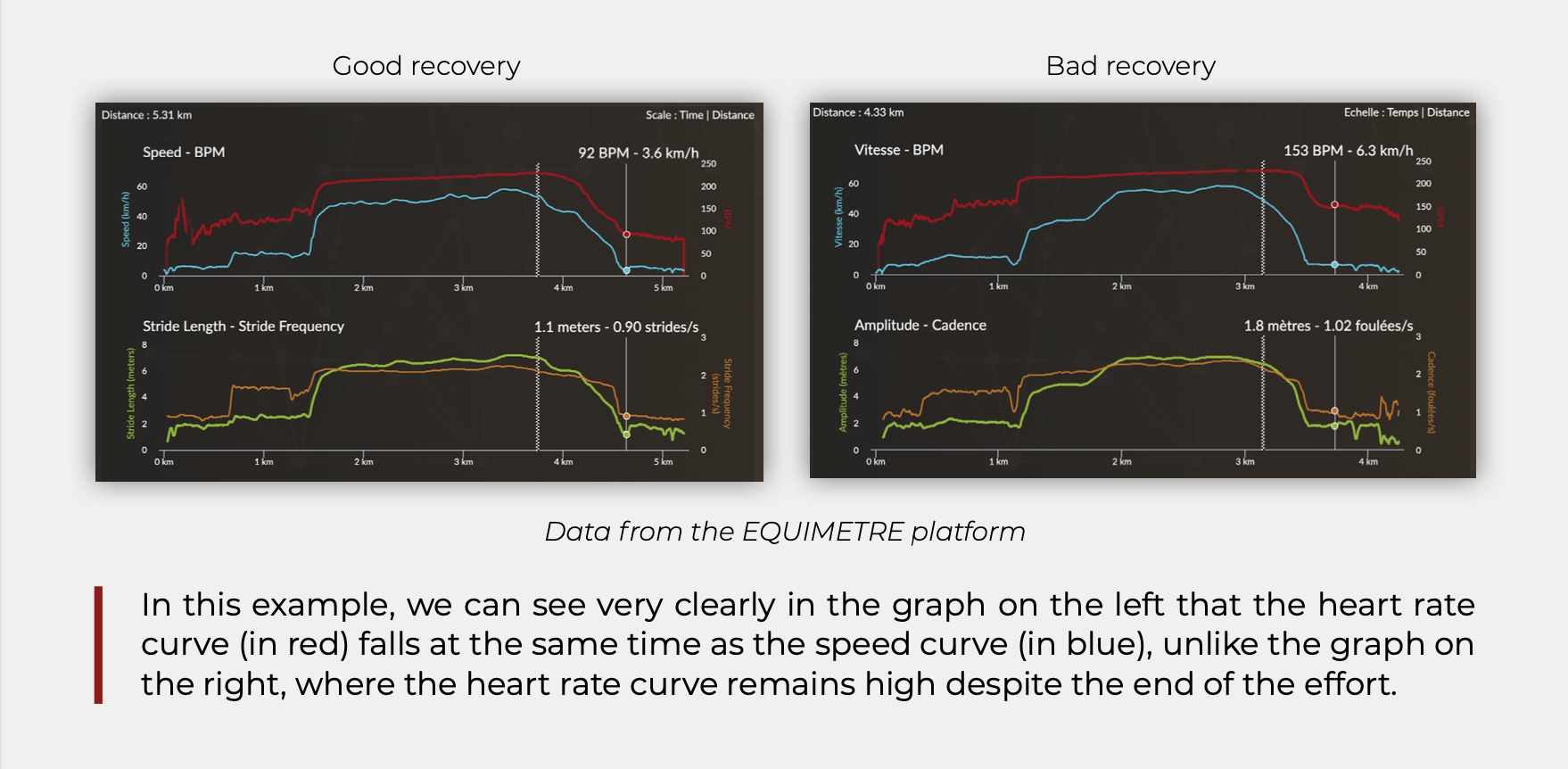
Individualizing and adapting training for each horse
By using heart rate as a reference, it is possible to customize training based on the specific needs of each horse. Adjustments can be made in terms of intensity, duration, and frequency of training sessions to improve endurance, strength, and speed while avoiding the risks of overtraining.
Heart rate also allows for assessing the horse’s progress over time. By comparing heart rate data between training sessions, it is possible to measure improvements in endurance and reduced recovery time.
To learn more about this topic, we recommend to read this article.
Conclusion
Heart rate is now a standard measure to assess horse workload and fitness. Monitoring and analyzing heart rate can be used to adapt the horse’s training effort in order to better balance the horse’s (well-being) and the trainer’s immediate needs (performance).
SOURCES :
Aerts, J.-M. ., Gebruers, F., Van Camp, E. and Berckmans, D. (2008). Controlling horse heart rate as a basis for training improvement. Computers and Electronics in Agriculture, [online] 64(1), pp.78–84. doi:https://doi.org/10.1016/j.compag.2008.05.001.
Szabó, C., Vizesi, Z. and Vincze, A. (2021). Heart Rate and Heart Rate Variability of Amateur Show Jumping Horses Competing on Different Levels. Animals, 11(3), p.693. doi:https://doi.org/10.3390/ani11030693.
Ifce.fr. (2023). Available at: https://www.ifce.fr/ [Accessed 12 Jul. 2023].
Key words: HR, heart rate, health, training, Equimetre vet, …
Photo credit: @scoopdyga

